SUMMER IN PROVENCE…AND A SURFEIT OF TRUFFLES?
by Susan Manfull
In all the summers we’ve spent in Provence, I have never seen any mention of summer truffles. Maybe I was drinking too much rosé to notice something I thought only surfaced in the winter—silly me—but, this summer, Tubera aestiva were on my radar…and on my plate!
I began the summer with a truffle hunt, later went to a truffle fête, and then tried (in vain) to squeeze in a visit to Carpentras—long famous for their winter truffle market—to see their first endeavor at a summer truffle market.
Living in the Luberon in late fall and winter, one can’t help but cross paths with a winter truffle (a.k.a. black or Périgord truffles and, in Latin, as Tuber melanosporum).
Our first encounter was probably at the hairdresser on a chilly December afternoon about fifteen years ago. My husband was having his locks trimmed at a popular hair salon when the mistral seemed to blow in a rather weather-beaten looking fellow through the door. He carried a medium-sized brown paper bag that he covertly opened for each client who was waiting for a turn in one of the four chairs. Noses were inserted deep into the bag, followed by audible oohs and ahhs. Soon everyone was on their cell phones, including my husband who called me to say that he wasn’t sure what was going on but that I had better come down to the salon. Before I got there, he had made the purchase of three firm, fragrant black truffles. We took them home, stored them with the eggs, and made an omelet for lunch the next day. We were hooked.
Our daughter’s soccer coach got wind of our salon encounter and invited us to accompany him (and his dog) on a truffle hunt. We jumped at the chance for a hands-on adventure and, at the end of a morning right out of a Peter Mayle book, came home with a several truffles the coach had kindly parted with. We learned more as we talked to friends Heidi and Mark Stanvick who, at the time, were importing truffles to the U.S. (from Spain), attended local truffle fêtes, and later went to the renowned “Mass for the Truffles” in Richerenches. We fell in love with the earthy aroma and pungent musky taste of black truffles.
I wrote a few articles about winter truffles and, somewhere along the line, I must have read about summer truffles but they just didn’t strike a chord until late this past spring when friend Germaine Juneau raved about a truffle hunt she had just taken. We would be in Provence in June and July and, in fact, would be leading a tour group in June. Hmmm….
But, what are summer truffles? I took Germaine’s advice and reached out to Lisa and Johann Pepin who own Les Pastras, an 11-hectare organic farm near Cadenet that grows grapes, olives, apricots, cherries, plums, apples, pears, pomegranates, figs, almonds, hazelnuts and…truffles! (And for good measure, they raise bees!)
“Summer truffles are a relatively new gourmet feature, at least for humans,” the Pepins explained. “In the old days, farmers used to feed them to their pigs!”
Summer truffles require the same amount of time to hunt, clean, and take to market and yet they command five to six times less than the coveted Tuber melanosporum. “Most farmers didn’t consider it worth the time and effort,” the Pepins added.
Summer truffles are much less fragrant than their famous winter counterparts. Whereas the scent of winter truffles can be likened to one’s damp, smelly socks after a marathon, the smell of summer truffles, in striking contrast (I now know), is barely detectable. The Pepins say that the smell is akin to mushrooms and hazelnut.
The taste of summer truffles is also very subtle. If you don’t pay attention, you might miss it. Like its fragrance, mushrooms and nuts come to mind. In contrast, the taste of black truffles is unique and difficult to put into words, but whether you pay attention or not, you won’t miss it! “Woodsy, musky, sexy, and intense” are some of the descriptives the Pepins use.
Perhaps the recent growth in popularity of summer truffles may be due, in part, to the “farm to table” movement favored by “upscale foodies,” the Pepins suggested. I am told that summer truffles have long been a mainstay of markets in the Var, but that has not been the case in the Luberon until recently.
The Pepins, who began their summer truffle hunts just three years ago, said that they had guests who stopped by the Tourist Office in Cadenet to inquire about the location of Les Pastras only to be told that “there was no such thing as summer truffles.”
Our curiosity was piqued and we thought that the savvy travelers in our tour group would want to learn more about this relatively new delicacy on pricey tables and in specialty food shops in the Luberon. We signed our group of eight folks up for the tour—what a fabulous evening it would be!
I suppose the adventure began before we arrived. Finding Les Pastras is challenging, even for people (like us) who know the area. Although not far, as the crow flies, from the centers of Cadenet or Lourmarin, it is located in a remote area.
It was a quintessential Provençal evening around 6:30 when we met Johann and Lisa, the Franco-American couple who moved from Chicago to Provence in 2003 to take the reins of the Pepin family farm where we all stood. Johann’s grandparents, who continue to share the property with the younger couple, bought it some forty-five years ago. They lived in Paris at the time and were drawn to the idea of retiring in the lovely stone farmhouse in such a bucolic setting, raising bees and enjoying the various fruits on the land—they had no idea that truffles laid just below the surface.
Although neighbors long knew that the Pepin’s land was laden with truffles, the Pepins did not find their first truffle until the winter of 2006-2007. It was a big one—80 grams—but I am getting ahead of the story.
Running in and out of our legs, as we stood on the lovely grounds, were Mirabelle and Éclair, two mixed-breed dogs who would be the stars of our adventure. Lingering in the background was le chasseur de truffe, the truffle hunter (who shall remain nameless).
There is a lot of intrigue in the world of le truffe. From furtive dealings in backrooms and luring away one’s truffle hunter with more money to drugging truffle dogs and mugging dealers after a good day at the market and killing trespassers who scale fences onto private land in search of black gold. Some tour guides go so far as to blindfold their clients for the drive to Les Pastras. (We didn’t use blindfolds but our group is bound to secrecy as to the exact location of the farm and the identity of the truffle hunter!)
As it happened, Éclair, just a few months old, was in training. He had already been through the “tennis ball” and “find the hidden truffle” phases and was now in the field. Johann explained that a puppy is first exposed to play with a tennis ball that is stuffed with a truffle and, gradually he learns when he brings the pungent tennis ball to the trainer, he receives a reward (e.g., a piece of meat). It is important that the dog learns that the trainer will give him a reward so that, eventually, when he’s in the field, he doesn’t eat the truffle.
That, Johann explains, is the drawback of working with pigs, a practice not typically seen nowadays. Apparently, pigs love truffles so much—the scent of a truffle is remarkably similar to the smell of pheromones released by female pigs (and boars)—that they would bite off the finger of the hunter in their excitement to get the truffle. At one time, you could reliably spot a truffle hunter by his missing finger!
The next phase entails hiding truffles indoors with the goal being two-fold: to find the truffles and not to eat them! The final phase is hiding truffles outdoors where there are more competing scents. By the time that our hunt took place, Éclair was in the field, hunting alongside Mirabelle.
Les Pastras Truffle Hunt. Video by Susan Manfull
Summer truffles are more prevalent than winter truffles but they are not as aromatic as winter truffles. I wondered how easy it would be for the dogs to pick up the scent. Very easy—and it was fascinating to watch the dogs follow the scent. Most of the time, they were right! Our basket quickly filled up, totaling we would learn later, 238 grams!
As we followed the dogs and their trainer through the forest, Johann regaled us with interesting facts about truffles and truffle hunting. For example, as most readers probably know, truffles are most commonly found under oak trees, but the telltale signs are a cleared area (sometimes called the “witch circle”) around the tree where the truffle spores have killed the ground-covering around the tree. Flies lurking around the cleared ground are another sign as a specific fly put its larvae about 6 inches below the ground near the truffles.
Les Pastras supports about 500 oak trees, many of which were quite young. When “truffle oaks” are purchased, they come inoculated with thousands of truffle spores. Very few will grow and it takes about 7 to 10 years to see whether the spore will mature and as long as fifteen years to determine if the tree will produce truffles.
The return-on-investment, according to Johann, is pretty low as very specific conditions must be present for truffles to grow (e.g., type of soil, pH, contrast in seasonal temperatures, drainage, and sunlight are the main areas of concern), not to mention the absence of sangliers and thieves.
Right now, the winter truffles are growing. We were asked to circumvent the area around all the oaks. Interestingly, winter truffles do not share the same oak trees as summer truffles. We will have to wait until November to see how successful the 2015-2016 crop will be.
We wrapped up the tour with a long stroll throughout the rest of the beautiful property. The other major crop on the farm is olives. As many as 400 olive trees comprise the groves on the family land. Johan showed us how the root ball of an olive tree may be divided and replanted to create more trees, a tedious task but one that is more economically and environmentally sustainable for the farm as a whole. Last year, olive oil production was extremely low at Les Pastras and throughout Italy, Spain, and France. Several factors combined to create this historically poor season but the main culprit was an olive fruit fly infestation. Johann is hopeful that this year will be better.
We saw the bee hives (from a distance), and many of the other fruit trees that thrive on the land. Stopping to smell the indigenous herbs and sample the fruits of so many of the trees prompted one member of our tour group to ask whether we had entered the Garden of Eden. Then, came the champagne and delicious truffle treats, including truffle ice cream! It was a heavenly spread.
We weighed the truffles we had collected, while following Mirabelle and Éclair around. Our 238 grams would be worth at least 40 euros (at 200 euros/kilo). Had the basket been full of winter truffles, it would have commanded a little over 240 euros (at 1200 euros/kilo). I would love to return in the winter and follow Mirabelle and Éclair around again!
For the rest of my seven-week stay in Provence, I definitely noticed summer truffles this summer. The first ever truffle fête in Rognes was a lot of fun, filled with samples and demonstrations of dogs showing off their prowess for finding truffles. I noticed that Hervé, owner of La Maison d’Ingrid in Lourmarin, had a huge basket of summer truffles prominently displayed on his counter. As I wrote above, in the Var at the Cotignac market, several vendors featured summer truffles for sale. And, finally, having discovered Tuber aestivum for myself, I made sure they were on my table several times while there. Sadly, I never made it to the first Carpentras summer truffle market, but my observations suggest there will be a second one next summer.
For now, my desire for truffles is satiated. At least until November.
Demonstration of truffle dog hunting for a truffle at the Rognes Truffle Fete. Video by Susan Manfull
Notes:
For more information on summer and winter truffle hunts at Les Pastras, visit their website http://www.lespastras.com/. I highly recommend this tour!
To learn about The Modern Trobadors’ 2016 Provence Tours, follow this link. We are booking now for June 2016.

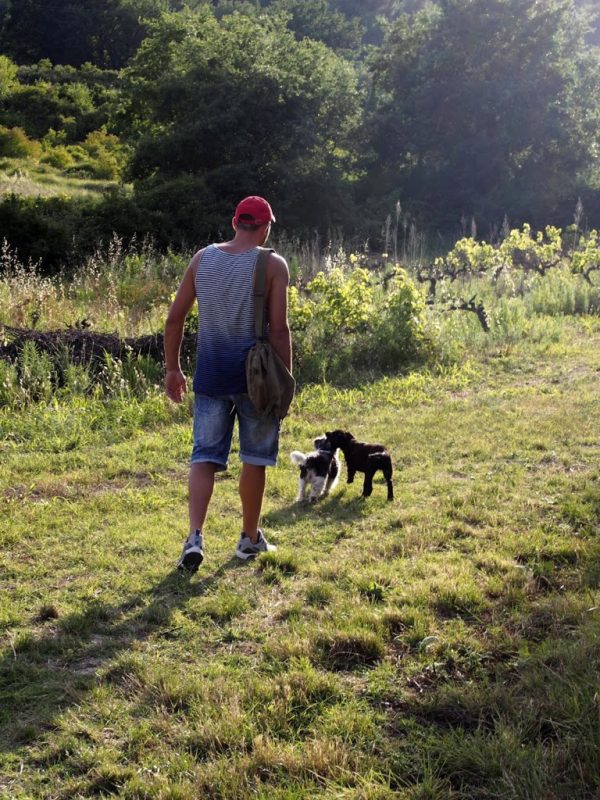

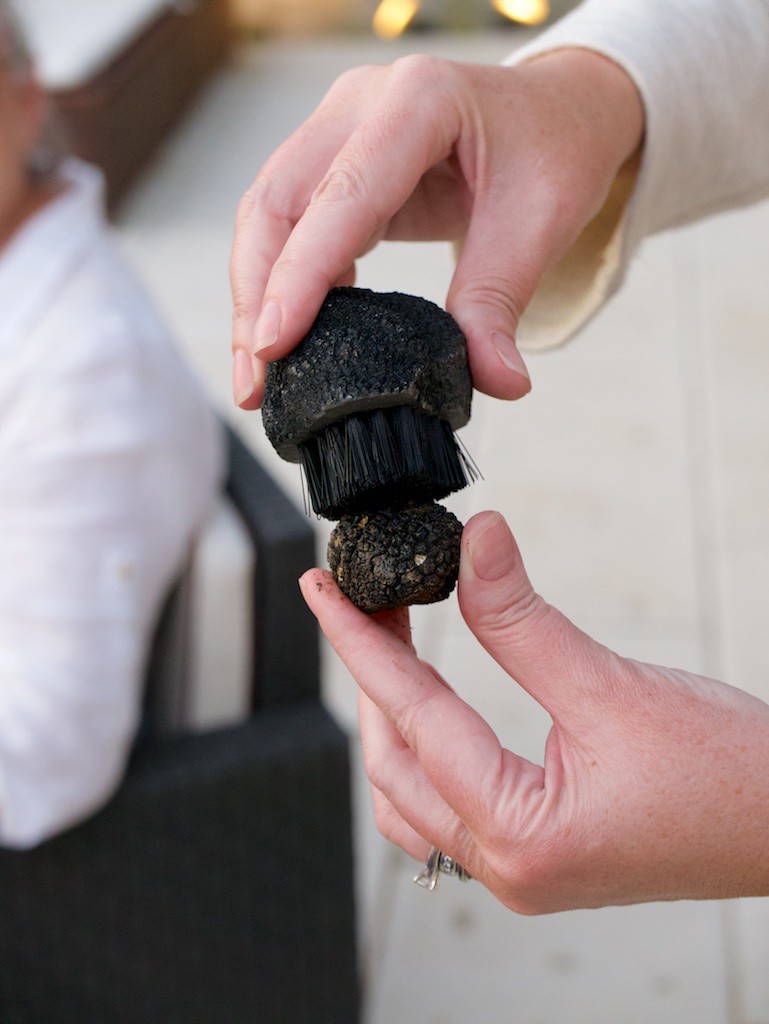
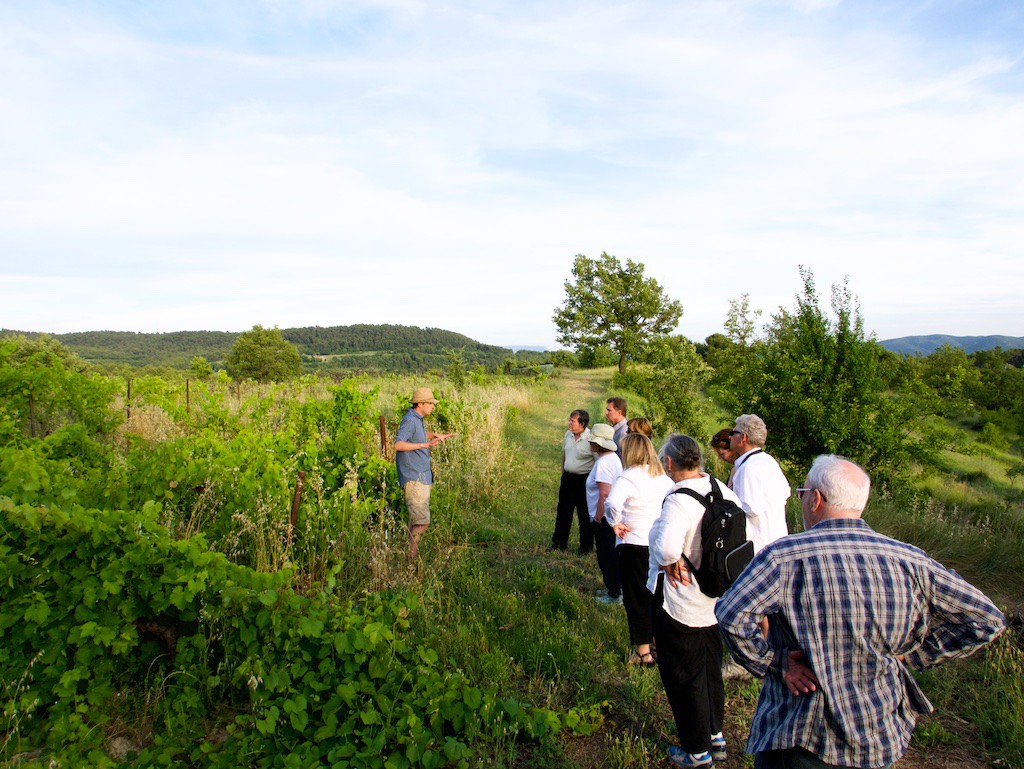
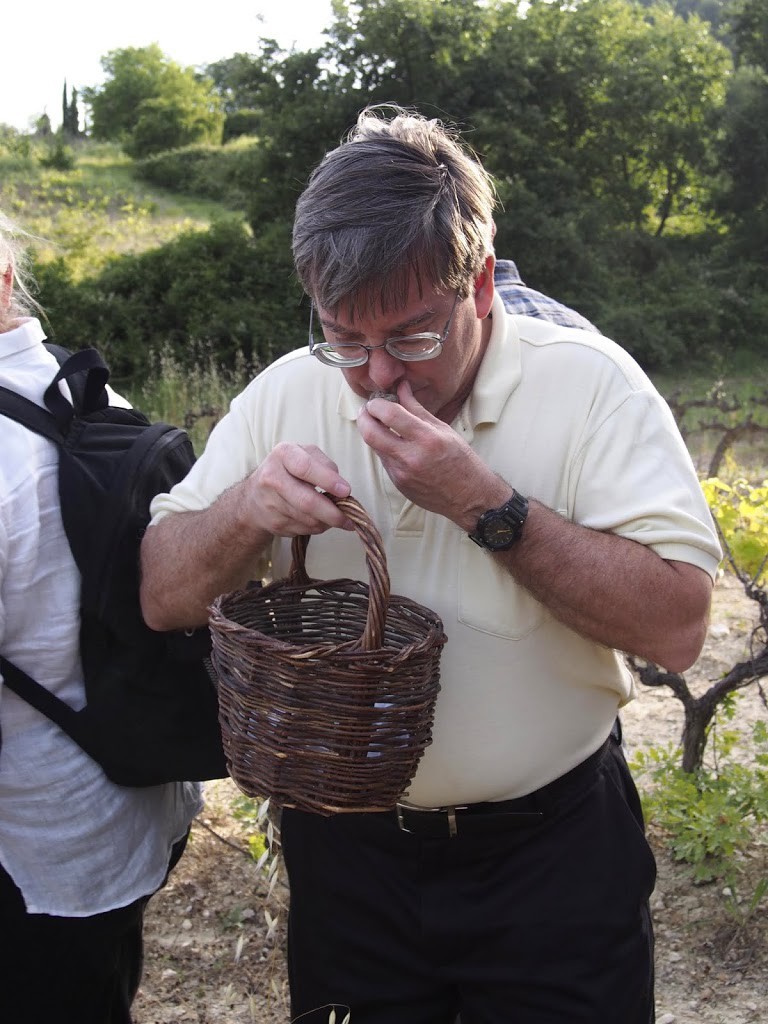
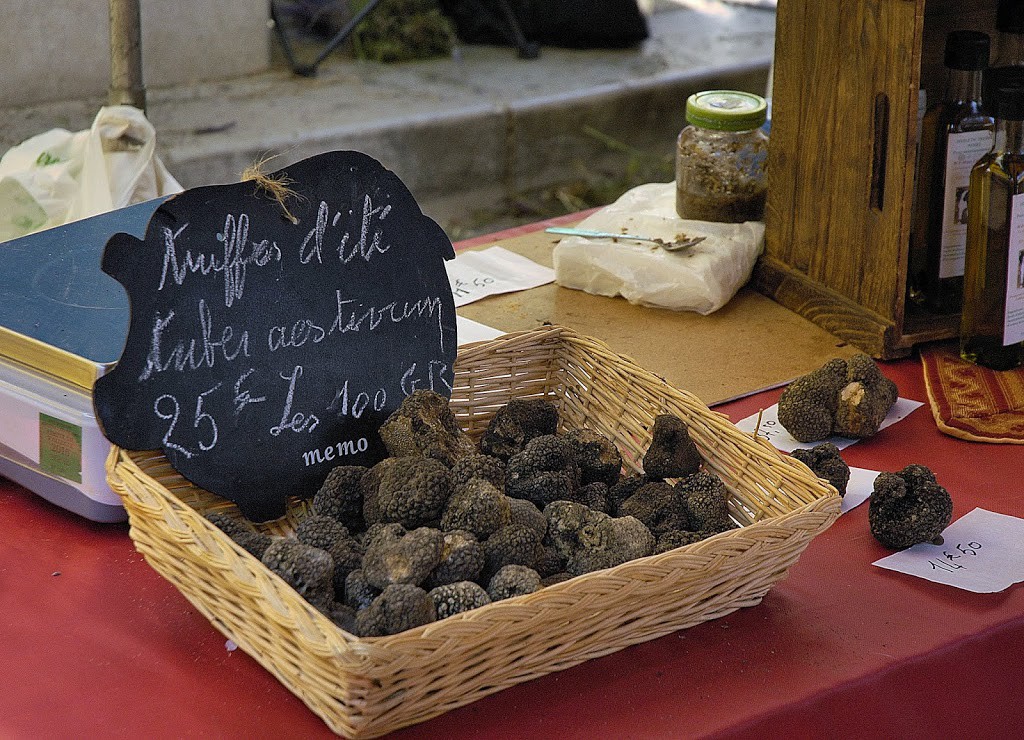
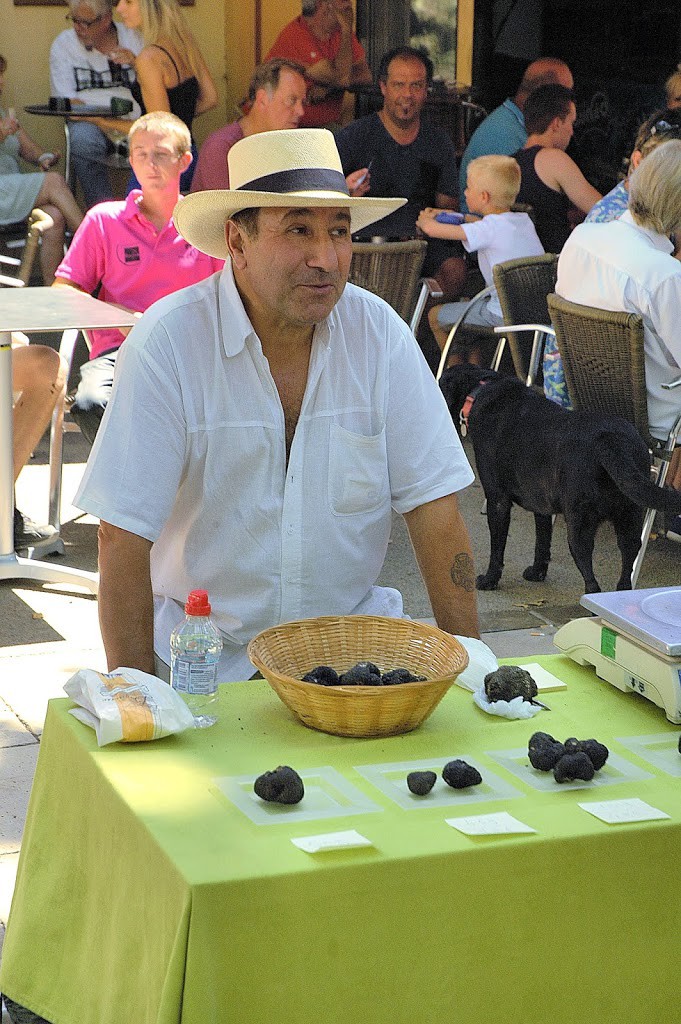
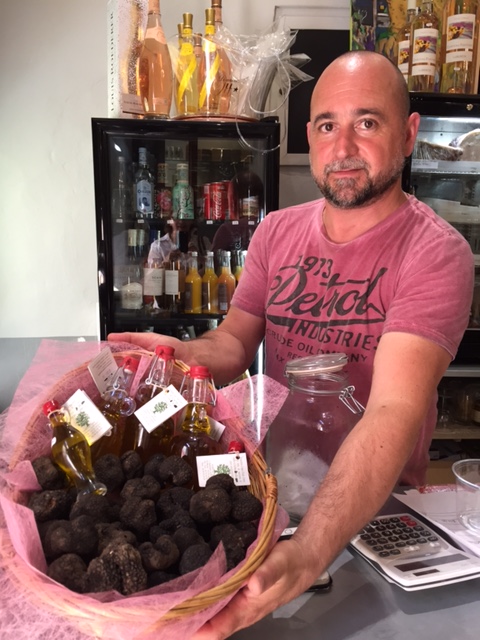
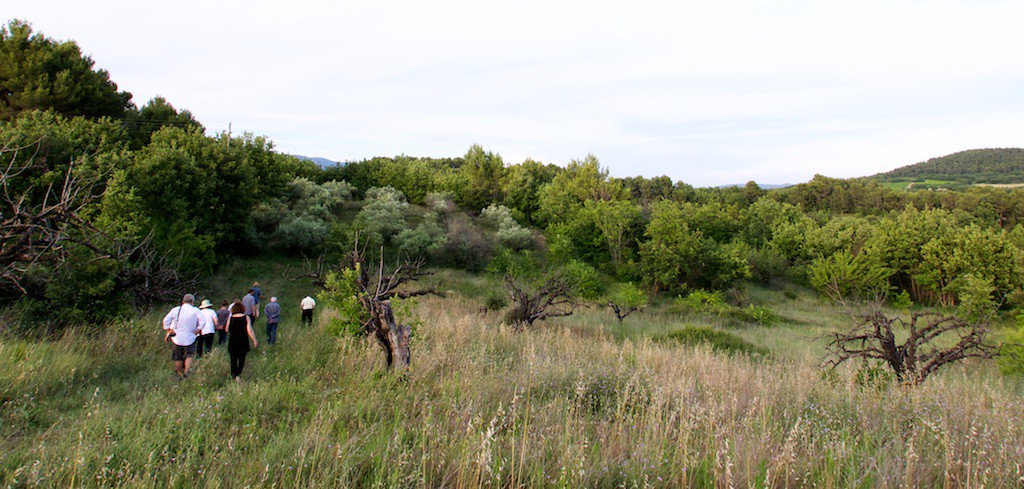
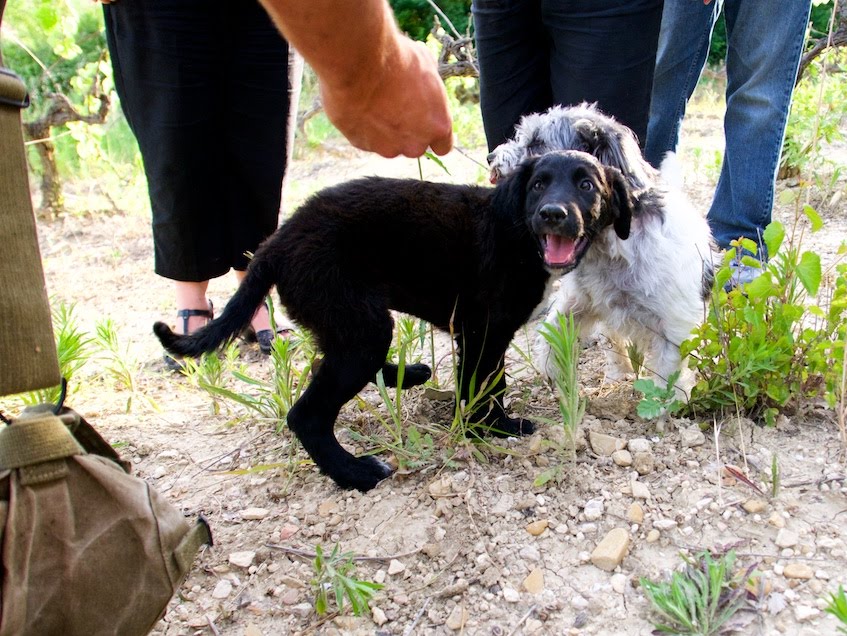
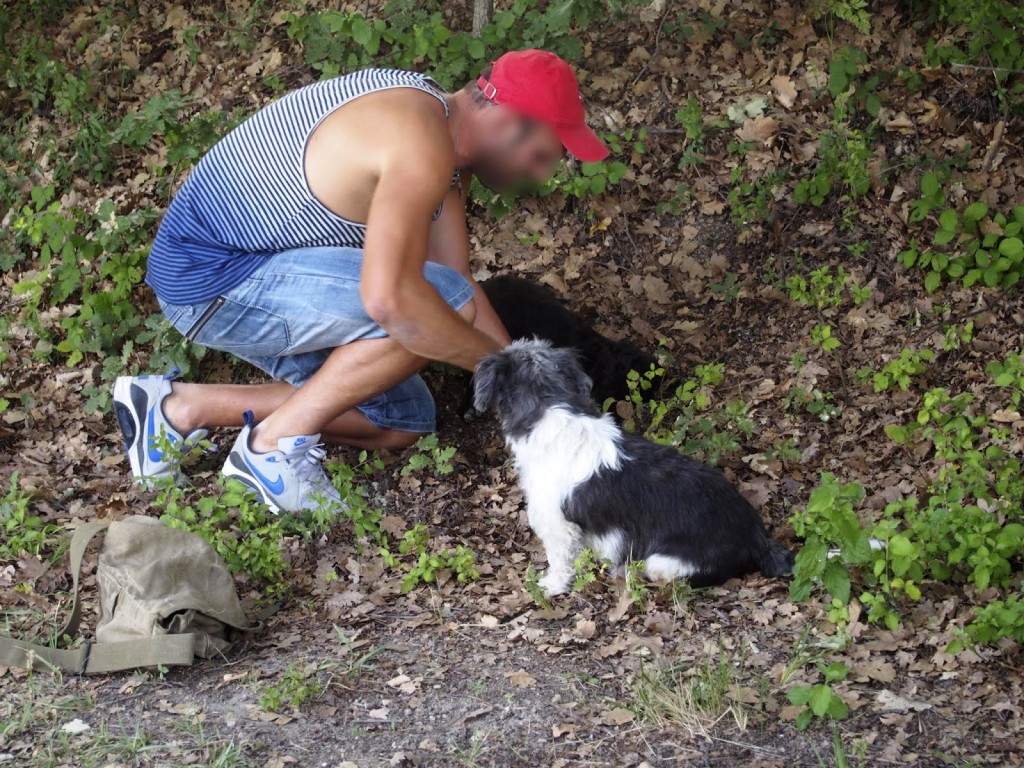
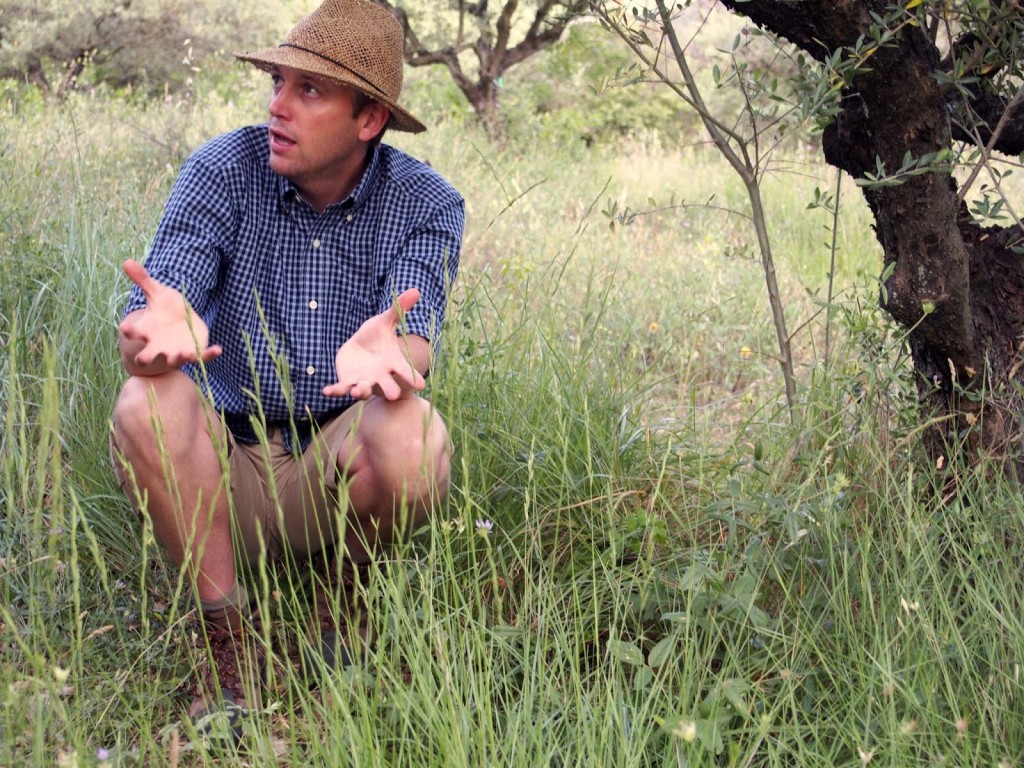
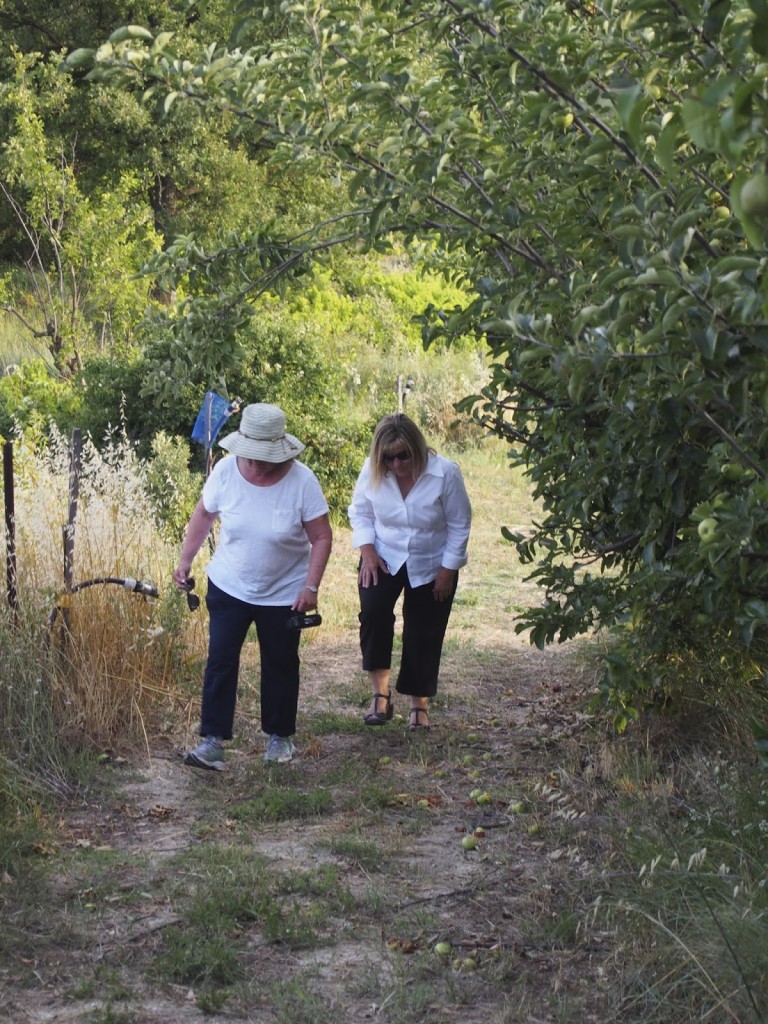
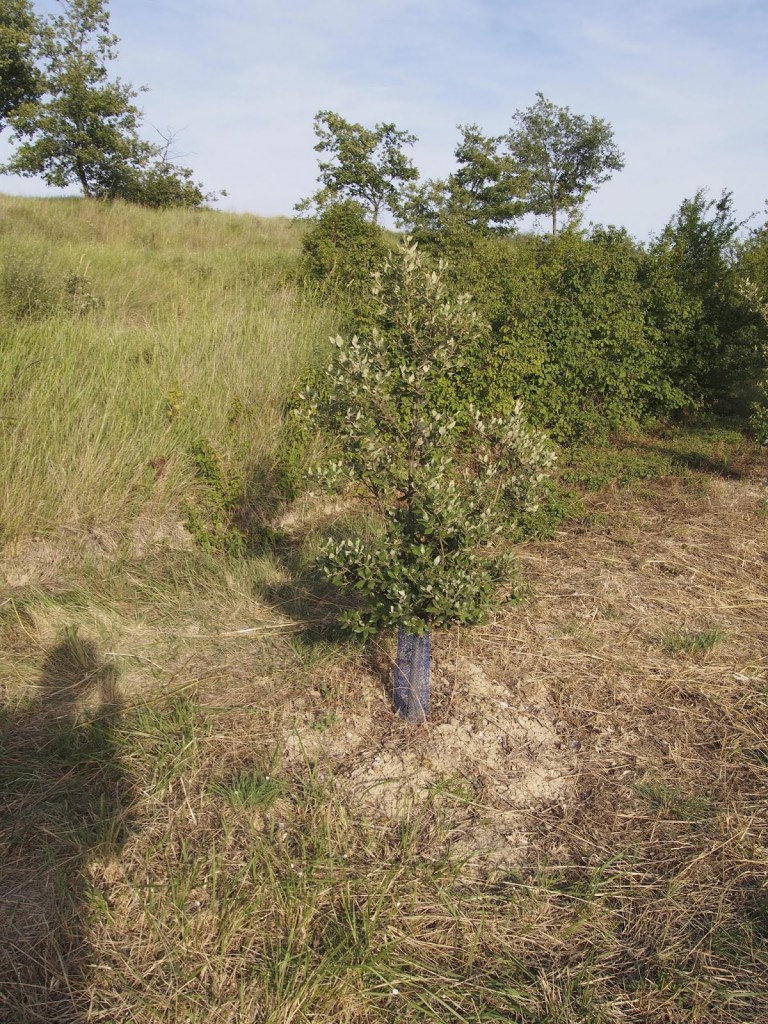
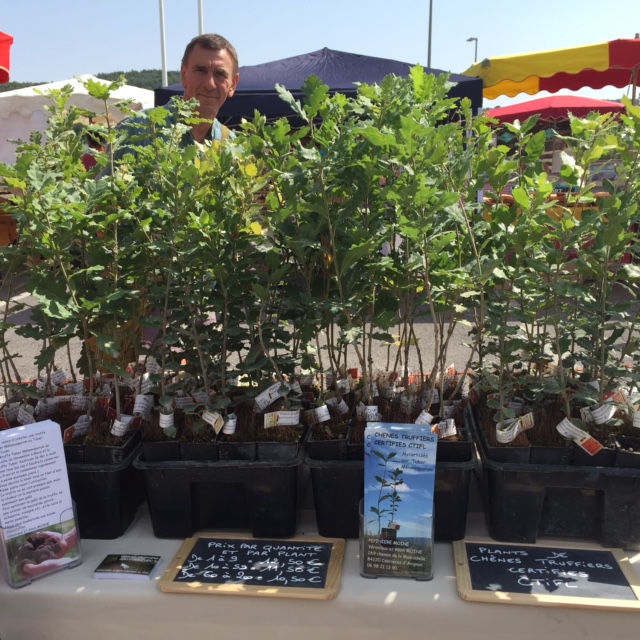
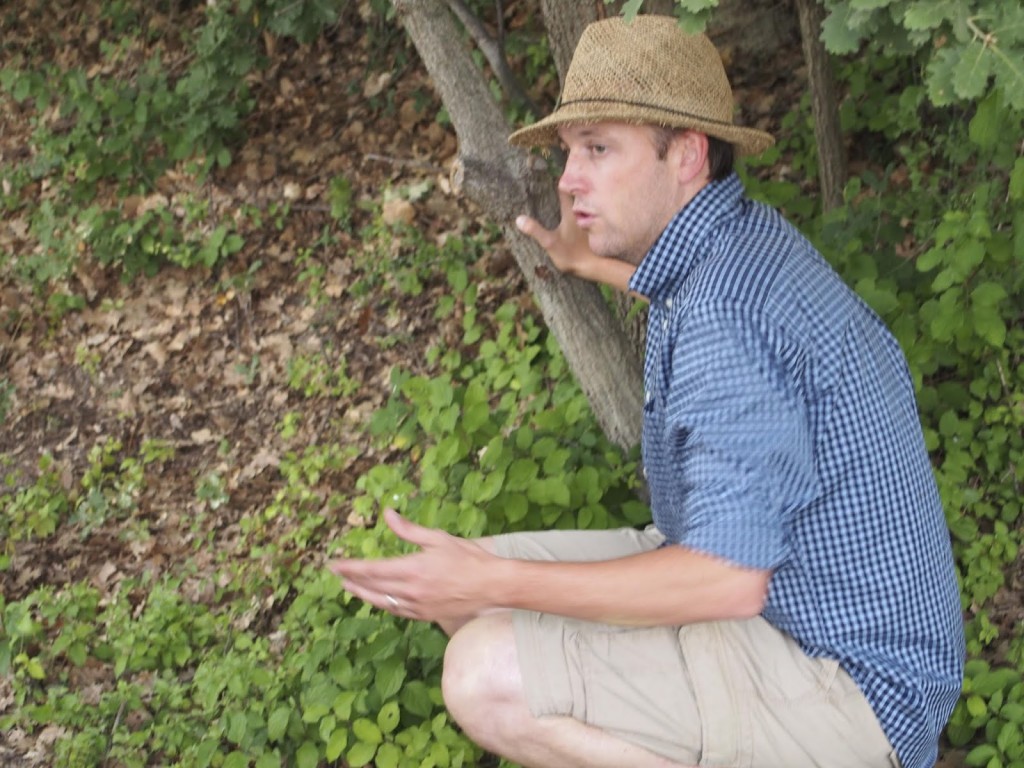
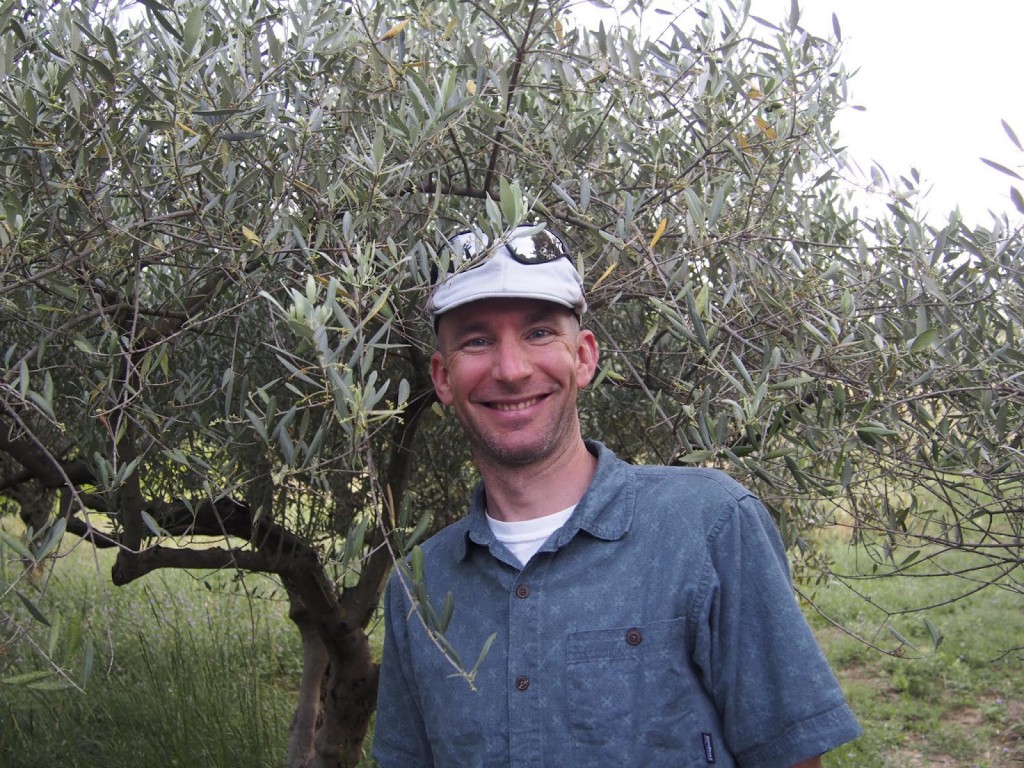
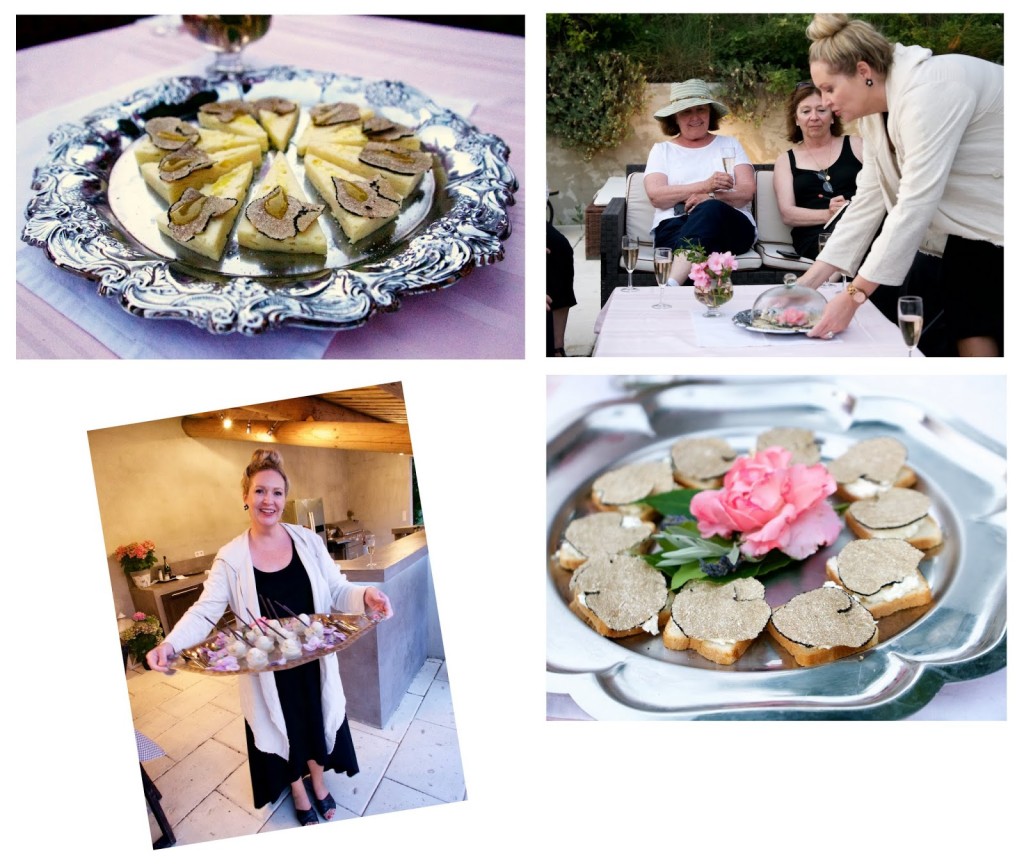
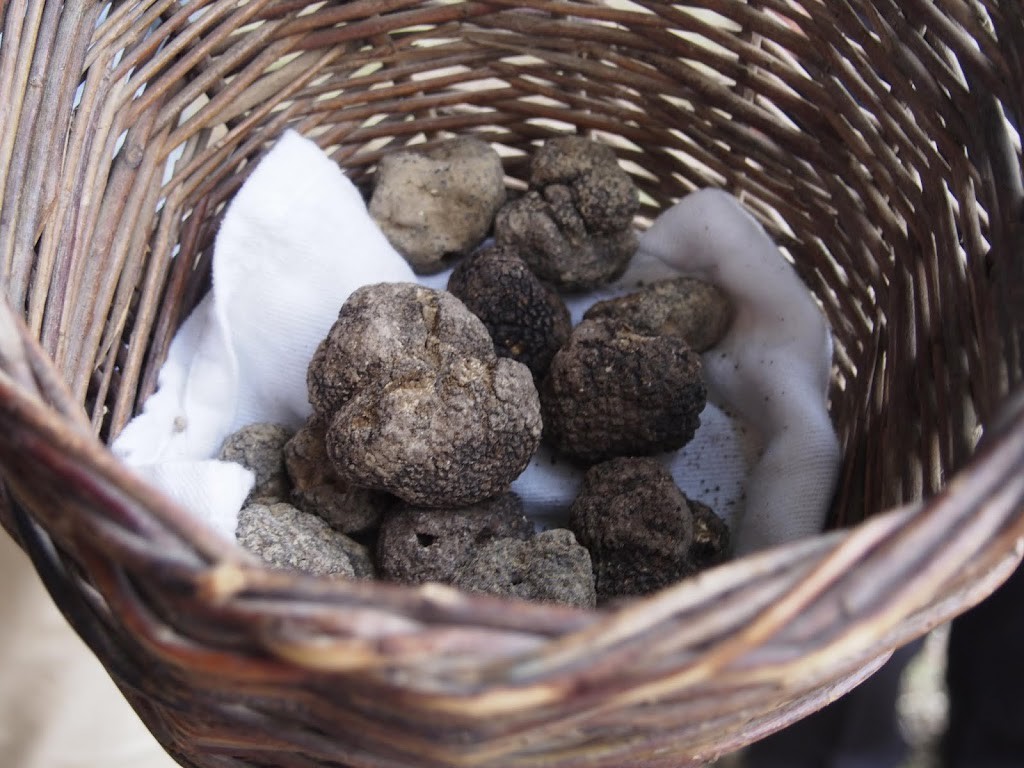
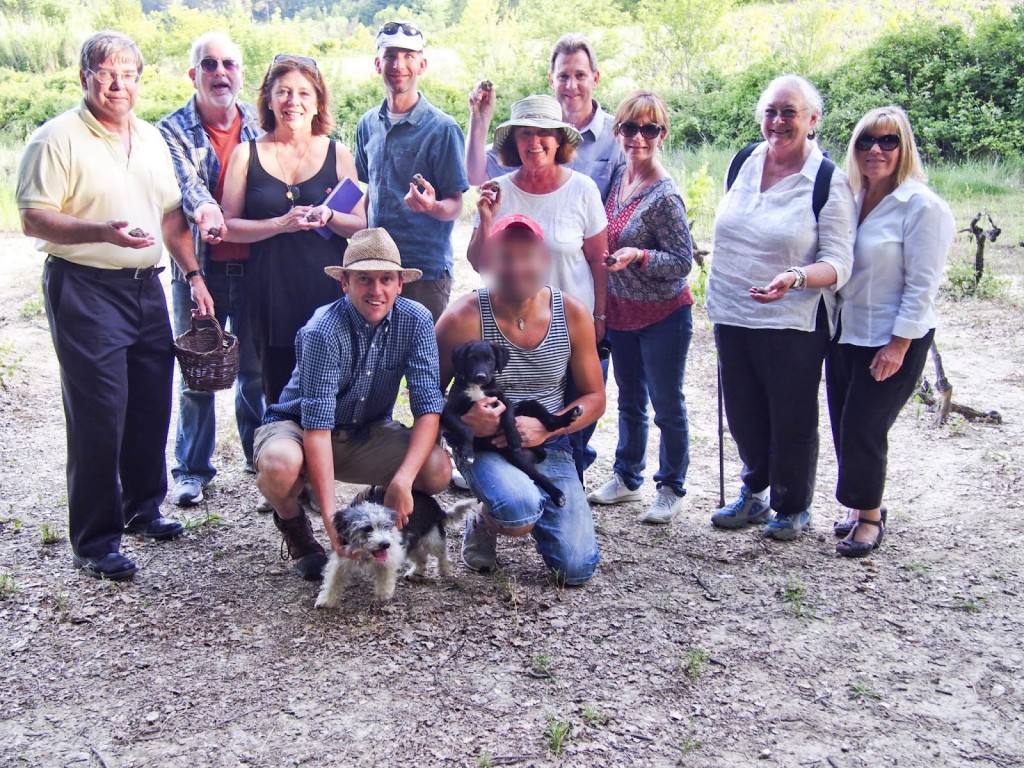
Hi Susan. I would love to go to Les Pastras with you next time you’re here in Provence. In the meantime, I will start training puppy Lucas, with the truffe you stashed in my freezer, so he’s ready for the adventure!
I have great expectations for that little fellow! Stuff the tennis ball with the truffle–sacrifice the truffle for the future!–and start training tomorrow!
Hi Susan
So glad you and your group were able to visit Les Pastras. I really enjoyed the truffle hunt and would recommend it to anyone traveling in the area during the summer. Bought some truffle oil and salt from them and still using it on my morning scabbled eggs. Lovely memory of my experience. Thanks for the post and sharing their story. Germaine
Thanks for recommending Les Pastras so highly. I am so very glad we went! I came home with the truffle oil and salt, too, and might just sprinkle a little on some eggs tomorrow! Hope to see you soon!
Fascinating, thank you for sharing, I had no idea that there are summer truffles! I too visit Lourmarin from USA having lived there in 2012, I will be there in early October and will be sure to check out whether there are ay truffles about as well as some good rose, I hear the 2014 vintage is better than the 2013?!
Hi Caroline,
Early October is one of my favorite times to go! Probably too early for winter truffles and too late for summer ones, BUT, as I wrote above the truffle oil and salt from Les Pastras is excellent (and I am very particular about both!).
Happy rosé tasting–one of my favorite things to do! What are your favorite rosés? Do you know my other blog–ProvenceWineZine.com?
Thanks so much for your comment, Caroline!
Hi Susan, great to hear back from you. I had actually reached out to you when I first discovered your delightful blog whilst living in Lourmarin in 2012/13 but think maybe you never got my message. Through your website link I met Walter & stayed in Les Nids d’hirondelles last year, loved it!, so thank you! Although I live in San Francisco I am actually English and as much as I love California, Lourmarin has stolen my heart. I’d love to understand more about your connection there and how you found it as I think you live on the East Coast? Perhaps we could email; carolinelongstaffe@gmail.com. Yes I do know & follow your fabulous wine blog. My favorite rose currently is Le Leoube which I first found in a deli here and then at the amazing Daylesford barns in the Cotswold in UK (here’s he link to my post about my visit there; http://bit.ly/1Aoxtps), do go there if you in the UK!) only to discover, at a wonderful local pub,The Wild Rabbit, which they also own, that in fact they own Le Leoube winery too….it’s a small world!! Love to chat to you more!
Hi all.
Our First post on the blog. We visit Provence regularly as we are in the UK so a
Thanks so much for posting on the blog! it was great to hear about your experience at Les Pastras, too!
We visited Les Pastras last year & like you enjoyed the experience. We to are now hooked on Truffles. Did you try the excellent truffle oil? We brought some home & use it in many dishes. As have not been able to get back to Provence this year unfortunately but planning a trip or 2 early next year. We will certainly visit Lisa & Johann again next year. I wasn’t aware of the summer truffle fete so will look out for that. Thanks for sharing
What a fun experience and we learned a lot, too! I did, indeed, try that truffle oil and loved it! Brought some back as well as some salt! I would like to visit during the late fall for another hunt!
Well, I have to say that “a surfeit of truffles” sounds like bragging to me! 🙂 This must have been a blast – and wasn’t it fun to learn that bees are being used to hunt truffles, as well? This post made me want truffles now… but sadly, there is no direct pipeline from Les Pastras to Tucson. Also, I had no idea there were summer truffles – perhaps too much rosé for me, too?
Hi David,
So interesting that you also were unaware of summer truffles. They were very good and the hunt was a blast, as you guessed, and we would do it again in the winter.
Bees and their ability to find truffles was fascinating. Do you recall where Kathy found that information?
Johann wanted me to let you know that through the Les Pastras truffle tree adoption program, you can receive (directly to your home) 100gr of winter black truffles from them. For the other products (winter
truffle oils and truffles salt) they have a distributor in the US (http://www.thefrenchmarket.us) and a portion of that income goes to benefit orphans in Haiti.
I am thrilled that one of our good friends adopted a tree in our name!
Thanks for your comment!
Hmmmm. I will have to look into adopting a tree! Hmmmmm…
I will ask Cathy about the truffle-hunting bees, and will keep you posted!
Thanks for that really interesting post. I had no idea there were summer truffles. In Oregon we have white truffles (Tuber oregonense), also much less intense than black Provencal truffles, but still nice. They come after the rains, in the fall and winter.
Hi Sue,
I’m glad to know I am in good company in being unaware of summer truffles! They are definitely worth a try! Thanks, as always, for your comment!